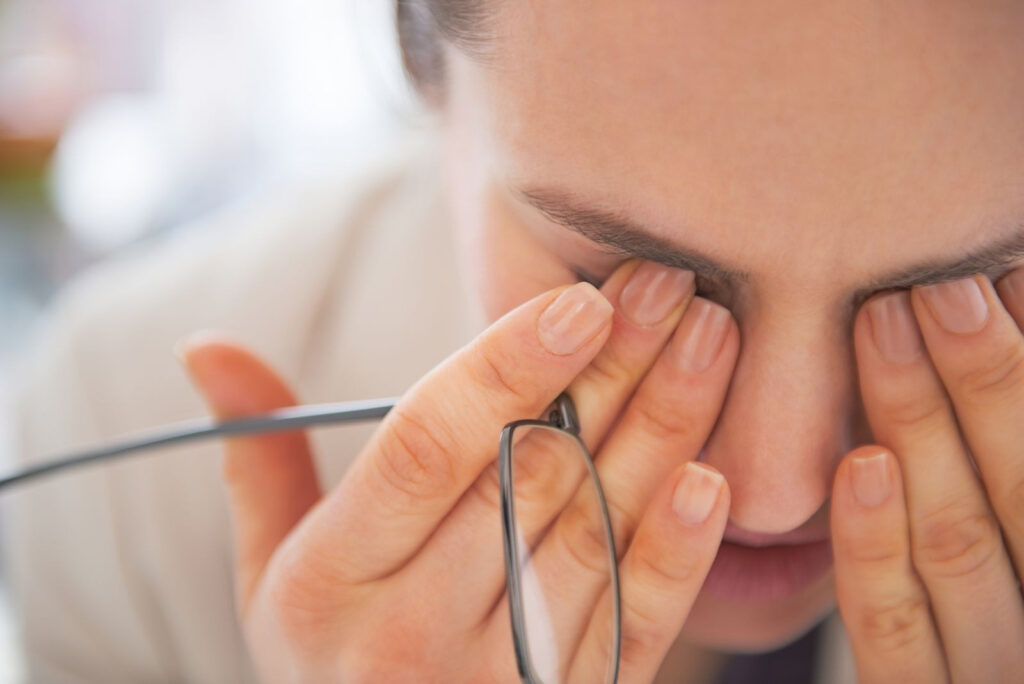Retinal damage refers to any impairment or injury to the retina, the light-sensitive tissue located at the back of the eye. This delicate structure is crucial for vision, as it converts light into neural signals that are sent to the brain for processing. Without a healthy retina, our ability to see clearly is compromised.
Understanding Retinal Damage
Regular eye exams are essential for detecting retinal damage symptoms early on, as some forms of damage may not present noticeable symptoms in the initial stages. Eye care professionals can perform various tests to assess the health of the retina and identify any signs of damage. Early detection and intervention are key to preserving vision and preventing further deterioration of the retina.
What is Retinal Damage?
Retinal damage is a complex and multifaceted condition that can have significant implications for one’s vision. It can manifest due to a variety of reasons, encompassing age-related degeneration, traumatic injuries, vascular diseases, and genetic disorders. The intricate structure of the retina, a thin layer of tissue lining the back of the eye, plays a vital role in converting light into neural signals that are interpreted by the brain, making any damage to this delicate structure a matter of concern.
As retinal damage progresses, individuals may experience a range of symptoms, including blurred vision, floaters, and even a complete loss of vision in severe cases. Recognizing these signs early on and seeking prompt medical attention is crucial in managing the condition effectively and preserving vision.

Causes of Retinal Damage
Understanding the underlying causes of retinal damage is essential in developing targeted treatment strategies. Age-related macular degeneration (AMD) stands out as a leading cause of retinal damage, particularly affecting individuals aged 50 and above. This condition gradually impairs central vision, impacting daily activities such as reading and driving.
In addition to AMD, diabetic retinopathy poses a significant risk for retinal damage, especially in individuals with uncontrolled diabetes. The high levels of sugar in the blood can damage the small blood vessels in the retina, leading to vision problems or even blindness if left unchecked. Furthermore, conditions like retinal detachment, macular holes, and various retinal vascular diseases can also contribute to the development of retinal damage, highlighting the diverse array of factors that can impact retinal health.
Identifying Symptoms of Retinal Damage
Retinal damage is a serious condition that can have a profound impact on vision and overall eye health. The retina is a thin layer of tissue located at the back of the eye that plays a crucial role in transmitting visual information to the brain. When the retina is damaged, it can lead to a range of symptoms that can affect vision and quality of life.
Early Signs of Retinal Damage
Recognizing the early signs of retinal damage is crucial for timely intervention. Common early symptoms include blurry or distorted vision, sensitivity to light, and the appearance of floaters or dark spots in the field of vision. These symptoms may not cause immediate concern, but it is essential not to ignore them, as they can indicate the presence of retinal damage. Read more about intervention at https://cehd.missouri.edu/ebi/interventions/
Progression of Symptoms
If left untreated, retinal damage can progress, leading to more severe symptoms. As the damage worsens, individuals may experience a significant decrease in visual acuity, the loss of peripheral vision, and flashes of light. These symptoms can significantly impact daily activities and quality of life. It is crucial to pay attention to any changes in vision and seek medical assistance promptly.
Risk Factors for Retinal Damage
Age and Retinal Damage
Advancing age is a significant risk factor for retinal damage. As we get older, the retina naturally becomes thinner and more vulnerable to injury. Age-related degeneration, such as AMD, becomes more prevalent, making regular eye examinations even more important in the elderly population.
Moreover, aging not only affects the physical structure of the retina but also its function. With age, the retinal cells responsible for processing light signals may decline in efficiency, leading to issues with vision such as decreased night vision or difficulty distinguishing colors. This underscores the importance of early detection and intervention to preserve retinal health as individuals age.
Lifestyle Factors Contributing to Retinal Damage
While age plays a significant role, lifestyle factors can also contribute to retinal damage. Smoking, for instance, not only increases the risk of AMD but also accelerates its progression. Additionally, a high-sugar and high-fat diet can negatively impact retinal health. Taking steps to lead a healthy lifestyle, such as quitting smoking and adopting a balanced diet, can help reduce the risk of retinal damage.
In addition to smoking and diet, exposure to harmful ultraviolet (UV) rays from the sun can also pose a risk to retinal health. Prolonged and unprotected exposure to UV radiation can contribute to the development of conditions like cataracts and macular degeneration. Wearing sunglasses that offer UV protection and a wide-brimmed hat when outdoors can help shield the eyes from potential damage, emphasizing the importance of sun safety practices in maintaining retinal health.
Importance of Regular Eye Examinations
Role of Eye Examinations in Detecting Retinal Damage
Regular eye examinations are crucial for detecting retinal damage at an early stage. The retina, a thin layer of tissue lining the back of the eye, is essential for vision as it captures light and sends signals to the brain for visual recognition. During an eye examination, an optometrist or ophthalmologist examines the retina using specialized equipment such as an ophthalmoscope. This tool allows them to visualize the retina’s structure and identify any abnormalities or signs of damage, such as thinning or bleeding. Early intervention upon detecting retinal damage can help preserve vision and prevent further deterioration of the retina, ultimately safeguarding overall eye health. To learn more about bleeding click here.
In addition to detecting retinal damage, eye examinations also play a crucial role in identifying other eye conditions such as cataracts, glaucoma, and macular degeneration. These conditions, if left untreated, can lead to vision impairment or even blindness. Therefore, regular eye examinations are not only essential for maintaining good vision but also for the early detection and management of various eye diseases.
Frequency of Eye Examinations
The frequency of eye examinations may vary depending on various factors, including age, medical history, and existing eye conditions. Generally, individuals without preexisting conditions are recommended to undergo a comprehensive eye examination every two years to monitor their eye health and detect any changes. However, for individuals with risk factors for retinal damage, such as diabetes or a family history of eye diseases, more frequent check-ups may be necessary to ensure timely intervention and prevent potential vision loss.

When to Seek Treatment for Retinal Damage
Recognizing the Need for Immediate Medical Attention
Some situations require immediate medical attention when it comes to retinal damage. Sudden onset or significant changes in visual symptoms, such as a sudden increase in floaters, flashes of light, or a curtain-like shadow across the visual field, may indicate a retinal tear or detachment. These conditions are considered medical emergencies, and prompt treatment is essential to prevent permanent vision loss.
It is crucial to understand that delaying treatment for retinal tears or detachments can lead to severe consequences, including permanent vision impairment or even blindness. The retina is a delicate layer of tissue at the back of the eye that is vital for processing light and sending visual information to the brain. Any damage to this crucial structure requires immediate attention from a qualified eye care professional.
Long-Term Management of Retinal Damage
For individuals with chronic retinal damage, long-term management becomes necessary. Depending on the specific condition and its severity, treatment options may include medication, laser therapy, or surgical interventions. Regular follow-up visits with an ophthalmologist are essential to monitor the progression of the condition and adjust the treatment plan accordingly.
Chronic retinal conditions such as age-related macular degeneration (AMD) or diabetic retinopathy require ongoing care to preserve vision and prevent further damage. Lifestyle modifications, such as maintaining a healthy diet rich in antioxidants and regular exercise, can also play a significant role in managing these conditions. It is essential for individuals with retinal damage to work closely with their healthcare team to develop a comprehensive treatment plan that addresses both the immediate symptoms and long-term health of the retina.
In Conclusion
Recognizing the symptoms of retinal damage and seeking appropriate treatment in a timely manner is crucial for preserving vision. Regular eye examinations, healthy lifestyle choices, and awareness of risk factors can help prevent retinal damage or detect it at an early stage. Remember, your eyes are precious, so prioritize their care and seek medical attention whenever necessary.
Read more about retinal detachment treatments on: Advanced Retinal Detachment Treatments

